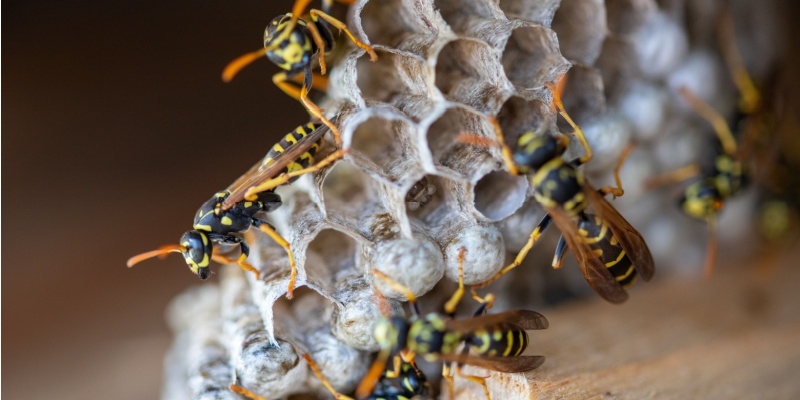Discovering wasps on your property can be alarming and potentially dangerous. Wasps can be aggressive, especially when they feel threatened, and their stings can cause severe allergic reactions in some people. If you find wasps on your property, it’s essential to take appropriate actions to manage and remove them safely. Here’s a step-by-step guide on what to do if you have wasps on your property:
Identify the Type of Wasps
The first step in dealing with wasps is to identify the type of wasps you’re dealing with. Common types include paper wasps, yellow jackets, and hornets. Each type has different nesting habits and levels of aggression.
- Paper Wasps: These wasps build open, umbrella-shaped nests, often under eaves or in attics. They are generally less aggressive but will defend their nests if threatened.
- Yellow Jackets: Yellow jackets are highly aggressive and build nests in the ground, in wall cavities, or in structures like sheds. They are known for their painful stings and can attack in large numbers.
- Hornets: Hornets build large, enclosed nests, typically in trees or high places. They are very aggressive and can be dangerous if disturbed.
Identifying the type of wasps will help you determine the best course of action for removal.
Avoid Disturbing the Nest
If you locate a wasp nest, avoid disturbing it. Wasps become aggressive when they feel their nest is threatened. Keep children and pets away from the area and do not attempt to remove the nest yourself if it is large or in a difficult-to-reach location.
Call a Professional
For large nests or nests in difficult-to-reach areas, it’s best to call a professional pest control service. Professionals have the expertise and equipment to safely and effectively remove wasp nests without putting you at risk.
- Expertise: Professional exterminators can identify the type of wasps and use the most effective methods to remove them. They have the knowledge to handle even the most challenging infestations.
- Safety: Professionals have protective gear and specialized equipment to remove nests safely. They can access high places and confined spaces without risking stings.
- Prevention: After removing the nest, professionals can provide advice on how to prevent future infestations. This may include sealing entry points, reducing attractants, and regular inspections.
Preventing Future Wasp Infestations
Once the nest is removed, take steps to prevent future wasp infestations:
- Seal Entry Points: Inspect your property for gaps, cracks, and holes where wasps could enter. Seal these entry points with caulk or other appropriate materials.
- Remove Food Sources: Wasps are attracted to food, particularly sugary substances. Keep food covered, clean up spills promptly, and dispose of garbage regularly.
- Maintain Your Yard: Regularly trim vegetation, remove yard debris, and avoid leaving piles of wood or other materials that could provide nesting sites.
- Install Traps: Wasp traps can help reduce the population around your property. Place traps away from areas where people gather to lure wasps away.
Dealing with wasps on your property requires careful consideration and appropriate action. Identifying the type of wasps, avoiding disturbing the nest, and using professional pest control services are crucial steps. Preventing future infestations involves sealing entry points, removing attractants, and maintaining your yard. By following these steps, you can safely and effectively manage wasp problems on your property, ensuring a safer environment for you and your family.




